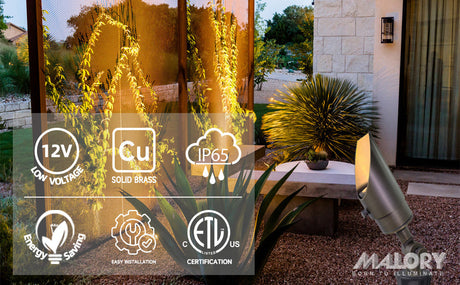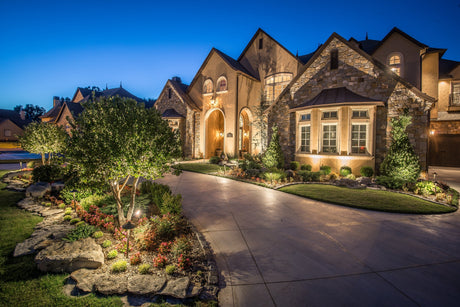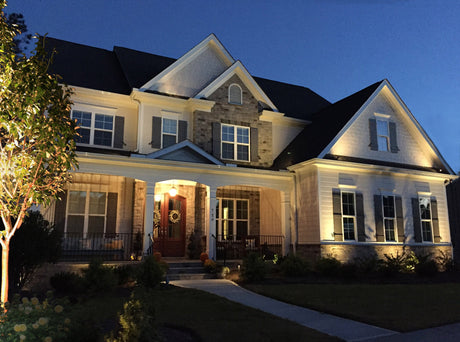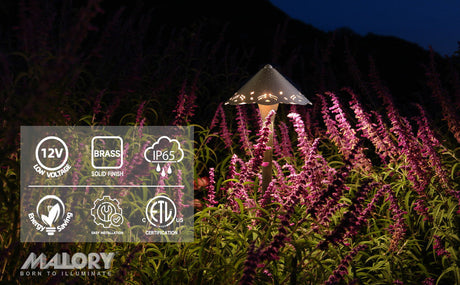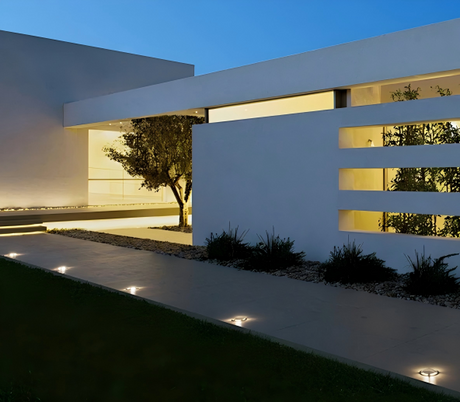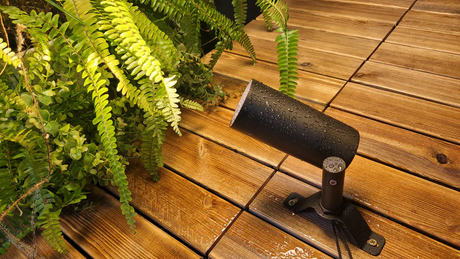When planning or upgrading your outdoor lighting system, one of the most important decisions is choosing between LED fixtures and traditional outdoor lighting technologies such as halogen or incandescent bulbs. Homeowners, landscape designers, and property managers all share the same concern: how to achieve beautiful, functional, and energy-efficient landscape lighting that lasts.
In this guide, we’ll break down the differences between LED and traditional lighting, focusing on energy consumption, maintenance, brightness quality, lifespan, and total cost of ownership. By the end, you’ll understand why LEDs have become the top choice for modern landscape lighting solutions.
The Role of Outdoor Lighting in Landscape Design
Outdoor lighting is more than just illumination. It shapes the atmosphere of a property, improves safety, and highlights architectural and natural features. A well-designed landscape lighting system can:
- Provide visibility for pathways, gardens, and driveways.
- Enhance curb appeal by showcasing trees, plants, and structures.
- Improve security with consistent nighttime illumination.
- Extend outdoor living hours for entertainment and relaxation.
Given these functions, the type of lighting you choose has a long-term impact on both aesthetics and performance.
Energy Efficiency: LEDs vs Traditional Fixtures
One of the biggest advantages of LEDs is their unmatched energy efficiency.
- LED Lighting: Modern LEDs convert about 80–90% of energy into light, wasting very little as heat. According to the U.S. Department of Energy, LEDs consume up to 75% less electricity than incandescent bulbs and about 50% less than halogen bulbs. For example, a 7-watt LED spotlight can produce the same brightness as a 35-watt halogen.
- Traditional Lighting: Halogen and incandescent bulbs are notoriously inefficient. Incandescents convert only about 10% of energy into light, with the rest lost as heat. Halogen bulbs are somewhat better, but they still consume far more power than LEDs for the same lumen output.
Bottom line: If lowering electricity bills is a priority, LEDs clearly outperform traditional outdoor lighting technologies.

Lifespan and Maintenance Requirements
Durability is another critical factor for landscape lighting systems, especially since fixtures are exposed to harsh weather conditions like rain, snow, and heat.
- LED Lighting: High-quality LED fixtures can last between 30,000 to 50,000 hours. In practical terms, this means up to 10–15 years of use with regular nighttime operation. LEDs also maintain consistent brightness over their lifetime and do not burn out suddenly; instead, they gradually dim, allowing time for replacement planning.
- Traditional Lighting: Incandescent bulbs typically last around 1,000 hours, while halogen bulbs range from 2,000 to 5,000 hours. Frequent replacements lead to higher maintenance costs and inconvenience, especially when fixtures are installed in hard-to-reach areas.
Bottom line: LEDs drastically reduce the hassle and cost of maintenance compared to halogen or incandescent lights.
Light Quality and Color Options
Many homeowners worry that LEDs may look too harsh or artificial compared to traditional lighting. However, modern LED technology offers a wide range of color temperatures and superior lighting control.
- LED Lighting: LEDs are available in multiple color temperatures, from warm white (2700K) to cool white (5000K), allowing precise control over the mood and atmosphere of your outdoor spaces. Warm light is ideal for pathways and social areas, while cooler light highlights architectural details or tall trees. LEDs also deliver consistent brightness without flickering.
- Traditional Lighting: Halogen and incandescent bulbs naturally produce a warm, pleasing glow. However, they offer limited flexibility in color options and can appear yellowish compared to the balanced tones of LEDs.
Bottom line: Both technologies can produce attractive light, but LEDs provide far greater flexibility and customization.
Total Cost of Ownership
When comparing LED landscape lighting and traditional options, upfront cost is often the first objection. LEDs generally require a higher initial investment, but the savings over time are significant.
Example Comparison:
Halogen system (10 fixtures):
- 35W per bulb × 10 fixtures = 350W total load
- At $0.15/kWh, running 6 hours per night costs about $288 per year
- Lifespan: 2,000 hours (roughly 1 year) → Frequent replacements required
LED system (10 fixtures):
- 7W per bulb × 10 fixtures = 70W total load
- At $0.15/kWh, running 6 hours per night costs about $58 per year
- Lifespan: 30,000+ hours (8–10 years) → Minimal replacements
Over a 5-year period, LEDs save hundreds of dollars in energy bills and eliminate recurring replacement costs.
Bottom line: The higher upfront cost of LEDs pays for itself quickly, making them the more economical long-term investment.

Environmental Impact
With growing emphasis on sustainable design, many homeowners and businesses are turning to environmentally responsible options.
- LED Lighting: Uses less electricity, reducing carbon emissions associated with energy production. LEDs also contain no harmful substances like mercury, which is found in some traditional lighting.
- Traditional Lighting: Consumes more energy, requires frequent replacements, and contributes to higher waste output.
Bottom line: LEDs support a greener approach to outdoor lighting and align with sustainable landscaping goals.
Common Pain Points Solved by LEDs
-
High Electricity Bills → LEDs cut energy costs by up to 75%.
-
Frequent Bulb Replacements → Lifespan of 10+ years reduces hassle.
-
Uneven Light Distribution → LEDs offer consistent, focused illumination.
-
Limited Design Options → Multiple color temperatures and fixture styles available.
-
Environmental Concerns → Lower energy use and reduced waste.
Final Verdict: LEDs Outshine Traditional Lighting
When weighing energy efficiency, longevity, light quality, and overall cost, LED outdoor lighting is the clear winner. While halogen and incandescent fixtures may offer a lower upfront price, they cannot compete with the long-term performance, savings, and environmental benefits of LEDs.
For homeowners seeking long-lasting landscape illumination, LED fixtures provide the best balance of beauty, durability, and efficiency. At Malory Lighting, we specialize in high-quality LED landscape lighting systems designed to withstand the elements while delivering superior brightness and style for years to come.



